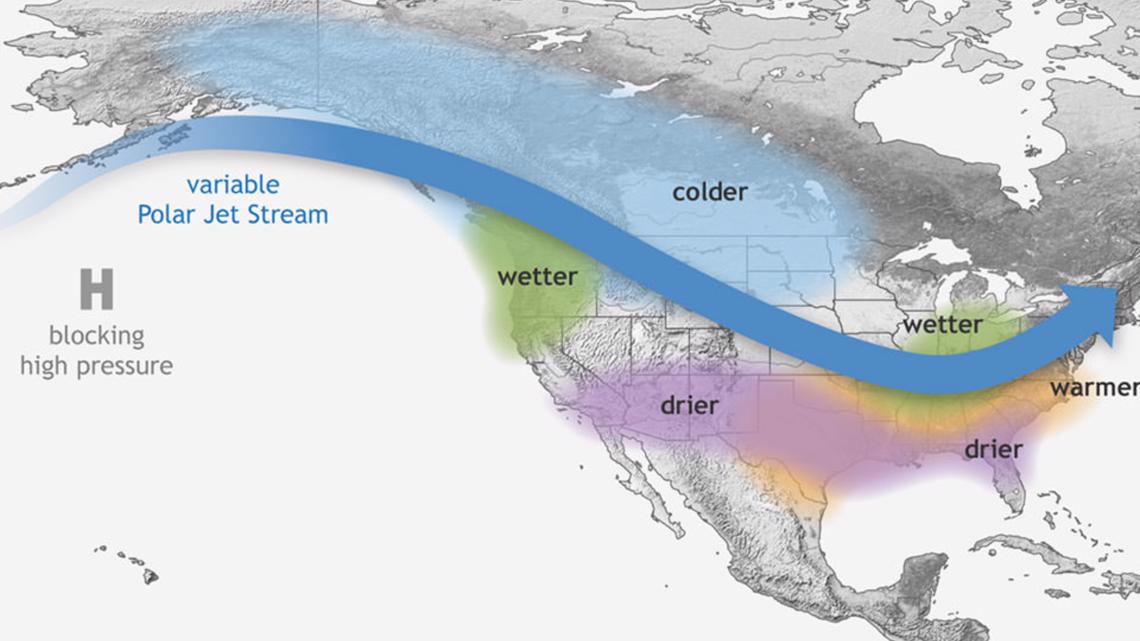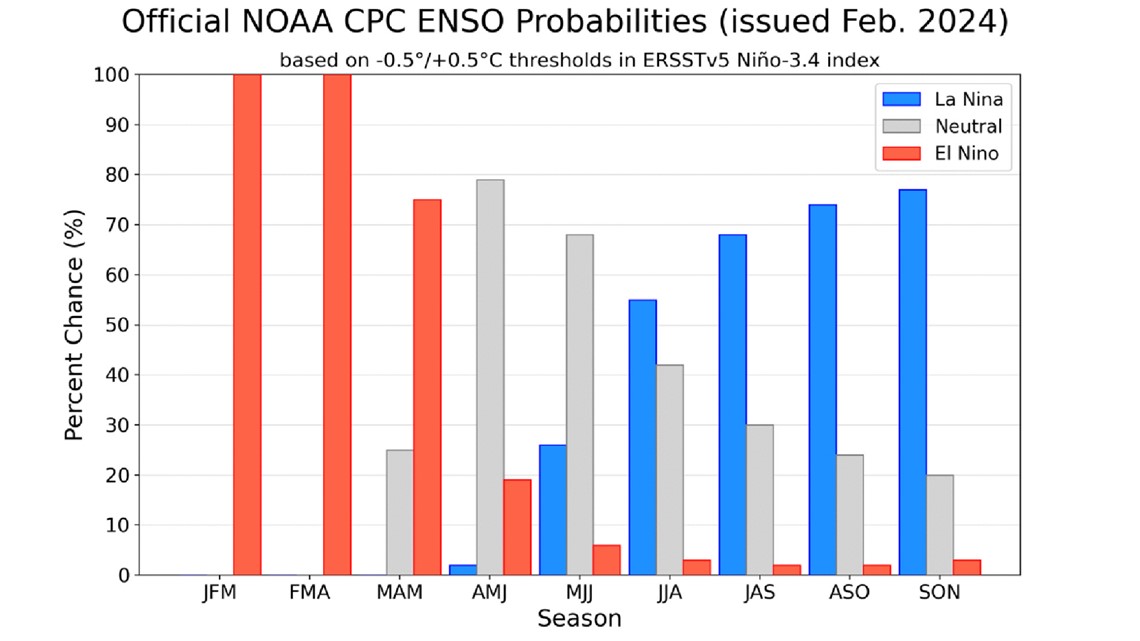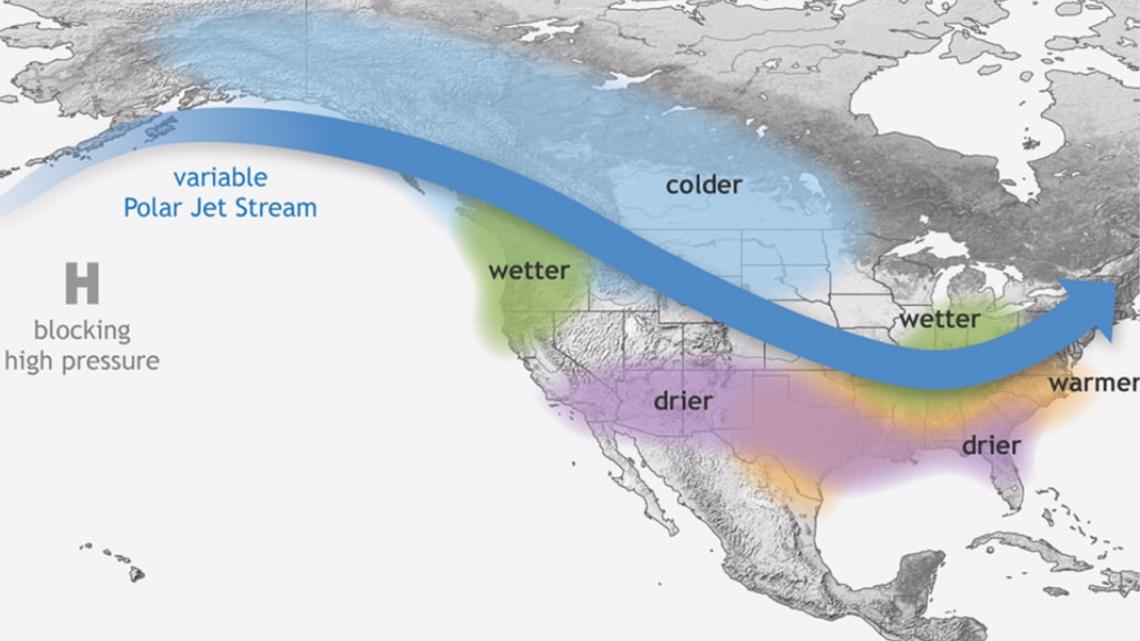El Niño is a climate pattern that occurs in the Pacific Ocean. It causes warmer-than-average winter temperatures across the northern US and wetter-than average winter temperatures across the South, which are signs of El Nino. La Niña is another climate pattern that follows strong El Nino events about 60% of the time.
Understanding El Niño and La Niña: Climate Patterns Explained
Seattle, Washington United States of AmericaEl Niño is a climate pattern that occurs in the Pacific Ocean.
It causes warmer-than-average winter temperatures across the northern US and wetter-than average winter temperatures across the South, which are signs of El Niño.






Confidence
100%
No Doubts Found At Time Of Publication
Sources
83%
‘Super El Niño’ is here, but La Niña looks likely. What’s in store for the coming months
CNN News Site: In-Depth Reporting and Analysis with Some Financial Conflicts and Sensational Language Mary Gilbert Wednesday, 07 February 2024 22:44Unique Points
- El Niño global climate pattern
- warmer-than-average winter across the northern US and a wetter-than-average winter across the South are signs of El Niño
- Super El Nino is one so strong it’s been dubbed ‘The Big One’
Accuracy
- La Nina will make way for its opposite, La Nina in transition that will have major consequences for weather in the US
Deception (100%)
None Found At Time Of Publication
Fallacies (85%)
The article contains several examples of informal fallacies. The author uses an appeal to authority by citing the opinions of climate scientists without providing any evidence or context for their expertise. Additionally, the author uses inflammatory rhetoric when describing El Niño's impact on weather patterns around the world.- The article contains several examples of informal fallacies. The author uses an appeal to authority by citing the opinions of climate scientists without providing any evidence or context for their expertise. Additionally, the author uses inflammatory rhetoric when describing El Niño's impact on weather patterns around the world.
- One example is when L’Heureux says that a serious drought in parts of the South has largely been wiped out this winter by repeated bouts of rain from storm systems. This statement implies that it was only because of El Niño's influence on weather patterns, but there may be other factors at play as well.
- Another example is when L’Heureux says that La Niña conditions are increasingly likely to be in effect through the fall. This statement implies a certainty that may not necessarily hold true and ignores any potential uncertainties or risks associated with this transition.
Bias (100%)
None Found At Time Of Publication
Site Conflicts Of Interest (50%)
There are multiple examples of conflicts of interest in this article. The author is an employee of CNN and NOAA's Climate Prediction Center, which may compromise their ability to report on the topic objectively.- <https://www.cnn.com/2024/02/07/weather/>
- The article mentions that 'NOAA scientists have been closely monitoring El Niño for months.'
Author Conflicts Of Interest (50%)
The author has a conflict of interest on the topic of El Niño and La Niña as they are reporting for CNN which is a news organization that covers weather patterns and climate change. The article also mentions NOAA's Climate Prediction center which may have an affiliation with the government or other organizations that could compromise their ability to act objectively.- The author reports on El Niño and La Niña for CNN, a news organization that covers weather patterns and climate change.
64%
El Nino to Bow to La Nina. Here's What to Expect
Newser LLC Arden Dier Saturday, 10 February 2024 19:45Unique Points
- El Nino global climate pattern
- warmer-than-average winter across the northern US and a wetter-than-average winter across the South are signs of El Nino
- La Nina will make way for its opposite, La Nina in transition that will have major consequences for weather in the US
Accuracy
- El Niño global climate pattern
Deception (30%)
The article is deceptive in several ways. Firstly, it states that El Nino has been dubbed 'Super El Nino' by CNN without providing any context or evidence to support this claim. Secondly, the article uses sensationalist language such as 'major consequences for weather in the US' and 'worsening western drought', which is not supported by scientific evidence. Thirdly, it states that La Nina follows strong El Ninos about 60% of the time without providing any context or evidence to support this claim.- worsening western drought
- El Nino has been dubbed 'Super El Nino' by CNN
- major consequences for weather in the US
Fallacies (75%)
The article contains several logical fallacies. The author uses an appeal to authority by citing CNN and the Climate Prediction Center as sources for information about El Nino and La Nina. Additionally, the author makes a false dilemma by stating that either there will be more Atlantic hurricane activity or worsening western drought during La Nina, when in reality it is possible for both to occur simultaneously. The article also contains an example of inflammatory rhetoric with phrases such as 'Super El Nino' and 'wetter-than-normal weather on the western side of the Pacific'.- The author uses an appeal to authority by citing CNN and the Climate Prediction Center as sources for information about El Nino and La Nina.
- The article contains an example of inflammatory rhetoric with phrases such as 'Super El Nino' and 'wetter-than-normal weather on the western side of the Pacific.'
- The author makes a false dilemma by stating that either there will be more Atlantic hurricane activity or worsening western drought during La Nina, when in reality it is possible for both to occur simultaneously.
Bias (85%)
The article contains examples of religious bias and monetary bias. The author uses the term 'Super El Nino' to describe a climate pattern that has major consequences for weather in the US, potentially increasing Atlantic hurricane activity and worsening western drought. This implies that there is some sort of divine or supernatural power behind this event, which could be seen as promoting religious beliefs.- The article uses the term 'Super El Nino' to describe a climate pattern
- This implies that there is some sort of divine or supernatural power behind this event
Site Conflicts Of Interest (50%)
Arden Dier has a conflict of interest on the topic of El Nino and La Nina as they are owned by CNN which is one of the topics listed in their article.Author Conflicts Of Interest (50%)
Arden Dier has a conflict of interest on the topic of El Nino and La Nina as he is reporting for CNN, Washington Post and Axios which are all major news outlets that cover climate change. Additionally, Arden Dier does not disclose any financial ties or personal relationships with any organizations or individuals related to these topics.- Arden Dier reports for CNN, Washington Post and Axios which are all major news outlets that cover climate change.
79%
'Super' El Niño is here. What does this mean for our weather? And what happens next?
USA Today Thursday, 08 February 2024 00:00Unique Points
- . . . predict that its counterpart, La Niña, will develop in its place later this year.
- California was just deluged by back-to-back potent atmospheric river storms that unloaded record rainfall and hundreds of mudslides, which are linked to El Niño
- . . . including deadly fires in South America and deluges in California.
- Forecasters at the National Weather Service issued a La Niña watch Thursday, projecting that there is about a 55 percent chance that this pattern will develop by August.
Accuracy
- El Niño influences weather around the globe
- . . . potentially increasing Atlantic hurricane activity and worsening western drought
Deception (50%)
The article is deceptive in several ways. Firstly, the author claims that El Niño has a historically strong status when it hasn't been officially declared yet by NOAA. Secondly, the article states that La Niña will develop later this year but doesn't provide any evidence to support this claim as NOAA has not made an official announcement about it. Thirdly, the author uses sensationalism and fear-mongering language when discussing potential impacts of El Niño and La Niña on weather patterns in the US, such as increased tornado activity in central and south Florida. Lastly, the article fails to disclose sources for some statements made.- El Niño will weaken, but its impacts on U.S. weather are expected to persist through April
- The current El Niño climate pattern has now attained "historically strong" status
Fallacies (80%)
The article contains several logical fallacies. The author uses an appeal to authority by citing federal scientists as the source of information about El Niño and La Niña. This is not a fallacy in itself, but it does raise questions about the credibility of these sources and their potential biases or agendas. Additionally, the article contains several examples of inflammatory rhetoric, such as describing El Niño as a- The warmth from the strong El Niñoo coupled with climate change helped to boost global temperatures in 2023.
- El Niñoño could lead to an increased chance of above-normal tornado activity in central and south Florida over the next couple of months.
Bias (85%)
The article contains examples of both political and religious bias. The author uses language that dehumanizes those who disagree with their views on climate change by referring to them as 'deniers'. They also use the term 'super El Niño' which is a politically charged phrase used by some politicians to describe extreme weather events caused by climate change.- The entire natural climate cycle is officially known as El Niño – Southern Oscillation, called ENSO by scientists. The cycle swings between warmer and cooler seawater in a region along the equator in the tropical Pacific.
Site Conflicts Of Interest (100%)
None Found At Time Of Publication
Author Conflicts Of Interest (0%)
None Found At Time Of Publication
80%
El Niño weakens in Pacific as NOAA issues La Niña Watch
KING 5 News Allison Sundell Friday, 09 February 2024 11:49Unique Points
- El Niño weakens in Pacific as NOAA issues La Niña Watch
- > There is a 55% chance of La Niña conditions developing by June to August.
- > Washington is currently experiencing one of the strongest El Niños on record, but change could be on the horizon next year.
Accuracy
- > El Niño is associated with greater chances of warmer and drier weather in the Pacific Northwest.
- The Climate Prediction Center predicted there was a 79% chance of transitioning to neutral conditions by April to June and a 55% chance of La Niña conditions developing by June to August.
- > From November to January, this El Niño event's peak strength was about 2 degrees Celsius, which NOAA said is the fifth highest on records dating back to 1950.
Deception (100%)
None Found At Time Of Publication
Fallacies (85%)
The article contains several fallacies. The author uses an appeal to authority by citing the National Oceanic and Atmospheric Administration (NOAA) as a source of information. However, this does not necessarily mean that NOAA's predictions are accurate or reliable. Additionally, the author presents dichotomous depictions of El Niño and La Niña conditions in terms of their impact on weather patterns in the Pacific Northwest.- The article states that El Niño is associated with greater chances of warmer and drier weather in the Pacific Northwest. However, this statement oversimplifies a complex phenomenon and ignores other factors that may also contribute to these conditions.
Bias (85%)
The article contains a statement that suggests the author has an ideological bias towards climate science and its predictions. The sentence 'El Niño is associated with greater chances of wetter and colder conditions.- ] El Niño is correlated with greater chances of warmer and drier weather in the Pacific Northwest.
- La Niña is associated with greater chances of wetter and colder conditions.
Site Conflicts Of Interest (50%)
The article discusses the possibility of La Niña conditions developing in the Pacific Northwest. The National Oceanic and Atmospheric Administration (NOAA) issued a La Niña Watch on Thursday, indicating increasing odds of those conditions developing this summer and remaining into the fall.- .
- El Niño is associated with greater chances of warmer and drier weather in the Pacific Northwest.
- La Niña is correlated with greater chances of wetter and colder conditions.
Author Conflicts Of Interest (50%)
The article discusses the possibility of La Niña conditions developing in the Pacific Northwest. The author is a reporter for KING 5 and has no direct financial ties to any companies or industries related to climate change.- .
- El Niño is a weather phenomenon correlated with greater chances of warmer and drier weather in the Pacific Northwest.
- Forecasters said there was a 55% chance of La Niña conditions developing by June to August.
- La Niña is associated with greater chances of wetter and colder conditions.
65%
El Niño’s end may be near. Here’s what’s coming next.
The Fixing Site: A Summary of the Article. Scott Dance Thursday, 08 February 2024 14:00Unique Points
- . . . including deadly fires in South America and deluges in California.
- California was just deluged by back-to-back potent atmospheric river storms that unloaded record rainfall and hundreds of mudslides, which are linked to El Niño
- . . . predict that its counterpart, La Niña, will develop in its place later this year.
Accuracy
- . . . scientists are now predicting that the pattern could disappear within months.
- . . . boost global temperatures and contribute to record warmth in January 2024
Deception (50%)
The article is deceptive in that it presents the idea of El Niño and La Niña as two separate climate patterns when they are actually opposite ends of the same pattern. The author also uses sensationalism by stating that 'the planet hit a long-feared level of warming: 1.5 degrees Celsius (2.7 degrees Fahrenheit) above a historic average from the 19th century, before the widespread consumption of fossil fuels' which is not accurate as it implies that global temperatures have only been increasing since then when in fact they have been rising for much longer than that.- The article presents El Niño and La Niña as two separate climate patterns when they are actually opposite ends of the same pattern.
Fallacies (85%)
The article contains an appeal to authority by citing the National Weather Service and climate scientists. The author also uses inflammatory rhetoric when describing the consequences of El Niño and La Niña patterns on weather around the world.- > Signs of a historically strong El Niño global climate pattern became obvious in recent weeks including deadly fires in South America and deluges in California. Yet scientists are now predicting that the pattern could disappear within months.
Bias (85%)
The article discusses the end of El Niño and the possibility of a La Niña pattern developing. The author uses language that implies that El Niño is responsible for global warming, which could be seen as biased towards attribution rather than causation.- ]It can be difficult to predict how El Niño or La Nina will behave during the spring months, the scientists noted, because the patterns tend to be in transition at that time,
Site Conflicts Of Interest (50%)
Scott Dance has a conflict of interest on the topic of El Niño and La Niña as he is an author for The Washington Post which covers climate prediction models.Author Conflicts Of Interest (0%)
Scott Dance has a conflict of interest on the topic of El Niño and La Niña as he is an author for The Washington Post which covers weather topics. He also mentions forecasters at the National Weather Service in his article.